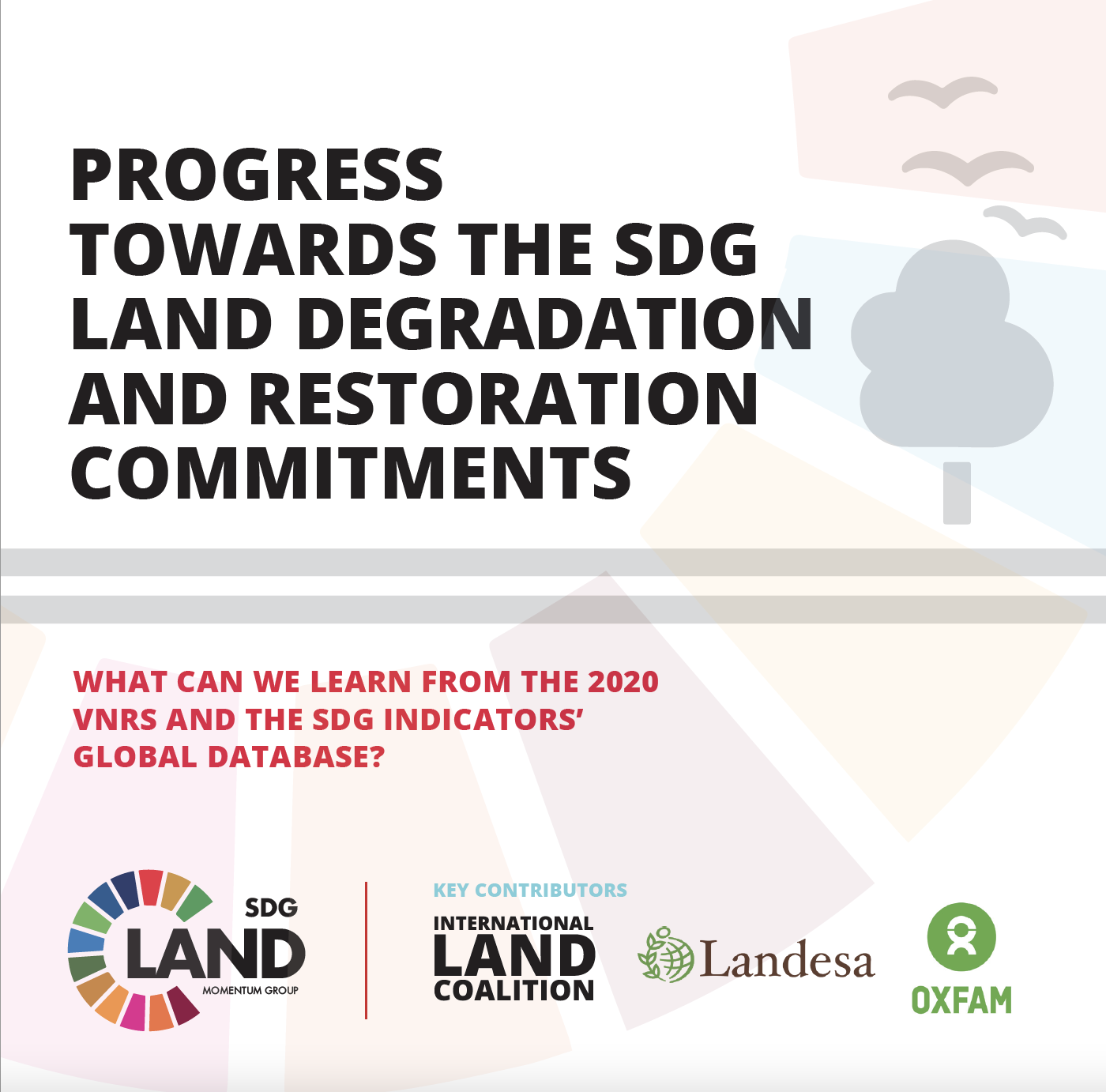Resource information
In 2015 we celebrated world leaders’ recognition of the foundational and strategic role that sustainable land management must play t o advance biodiversity conservation and climate resilience.
Five years after the SDGs were set in motion and a third of the way into their implementation timeframe, it is important to assess how far we have come: what have countries done to address their ambitious but critical cross-cutting commitments to combat desertification, restore degraded land and soil, including land affected by desertification, drought and floods, and strive to achieve a land degradation-neutral world? This assessment is particularly timely given that the 2020 High Level Political Forum reviewed progress toward SDGs 1, 2, 5 and 15 all dealing directly with land and land governance. In particular, we studied progress towards SDG 15 to “protect, restore, and promote sustainable use of terrestrial ecosystems, sustainably manage forests, combat desertification, and half and reverse land degradation and halt biodiversity loss.”
There are indeed countries that have advanced their SDG land de gradation and restoration commitments. Some have undertaken thoughtful planni ng or allocated new resources. Others have augmented or strengthened land resto ration and sustainable land management practices in an inclusive way. A fe w have introduced ambitious reforms, established new national programs, or drafte d new legislation to ensure long-term efficacy. However, our review suggests that m ost countries have yet to prioritize land degradation neutrality in their nat ional development agendas and most have not undertaken significant action. Even th ose who have acted decisively have a long way to go before their new la ws, policies and strategies are fully implemented, or their programs reach the n ecessary scale.
This lack of sufficient action is particularly vexing since many countries have also made similar environmental commitments to other UN framewo rks: the UN Framework Convention on Climate Change (UNFCCC) and the UN Conv ention to Combat Desertification (UNCCD). In fact, several countries me ntioned in their Voluntary National Reviews actions driven by their commit ments to the UNFCCC and UNCCD — see for example the VNRs of India, Kyrgyzsta n, Morocco, Mozambique, Nepal, Papua New Guinea, Samoa, and Seychelles.

